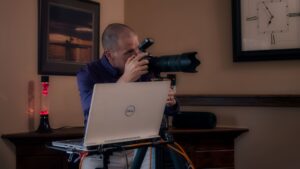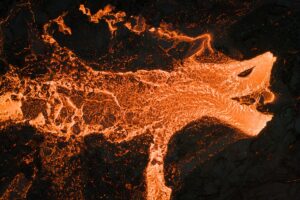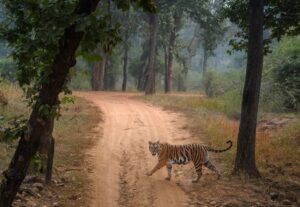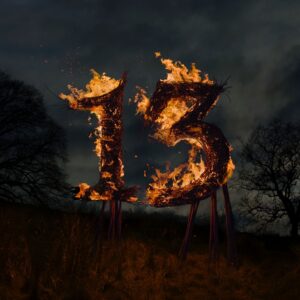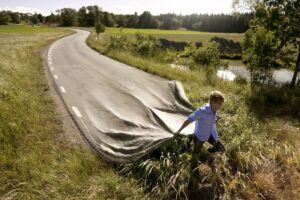
If there’s a silver lining to the current pandemic, it’s that the offering for things like courses and conferences online has exploded in the last two years.
Nicolas St-Pierre
You can also listen to this episode on iTunes, Pocket Casts, Spotify, Castbox, and Google Podcasts.
Our black & white

In this week’s episode, I talk to Nicolas St-Pierre, a documentary and street photographer from Canada. Nicolas won the Urban Book Award in 2021, an accomplishment that helped him gain even more recognition as an artist.
Nicolas works as a diplomat and has a background in law and reporting. His work is realistic and thought-provoking, a combination that many street photographers try to achieve in their own work.
We talk about:
- How his life in Japan inspired him to create the book “Where Have the Birds Gone?”
- How he takes photos that help viewers look at the world from a fresh perspective
- His adventures as a documentary and street photographer in Canada, Japan, and many other countries
& much more!
I enjoyed speaking with Nicolas about his fascinating life and philosophy as a photographer. If you’re interested in documentary and/or street
Here is a preview of our conversation with Nicolas St-Pierre.

Q: I want to congratulate you on being the winner of the Urban Book Award for your book “Where Have the Birds Gone?” Please tell me about it and what inspired you to create it in the first place.
Nicolas St-Pierre: Thank you very much. In summer 2015, I moved to Tokyo to take a position at the Embassy of Canada in Japan. A few months into my stay there, I had the unique opportunity of attending a one-week workshop that was offered by a then-Magnum photographer.
The workshop really pushed me to the limit. It was a very difficult workshop. It sparked a deep reflection about my
I spent four years in Japan. During those four years, I spent countless hours exploring, on foot, the streets and the back alleys of Tokyo. Almost every day, I was stopped dead in my own tracks by the unexpected sight of something that was strange – that did not quite belong to the scene – or by the deafening silence of something that cried out to be there but that wasn’t. Despite all the time and efforts that I had invested to learn Japanese and acquaint myself with the local culture, I was never really able to completely shake off the impression that I had set foot in some kind of strange land. My book actually constitutes my own attempt at rendering the sense of alienation, unease, and impending doom that I felt while living in Japan.

Q: How do you decide when to shoot in/convert to black & white?
Nicolas St-Pierre: It just felt really natural for me, when I picked up
With time, however, I opened myself to other influences and I started introducing color in my work. I know that some photographers argue that one should avoid doing both color and black and white projects. They say, “One should choose a side because ultimately, this will be your unique signature.” With all due respect for those photographers, I disagree with this idea.
I think that more than a matter of taste, color and black & white are two of the many creative tools that a photographer can use to convey his or her emotions, state of mind, and mood. I don’t see why photographers should renounce to these tools for a simple matter of principle.
In my view, I couldn’t have made “Where Have the Birds Gone?” in color because it wouldn’t have adequately conveyed the sense of unease and alienation that I felt at the time. It’s a black and white project because I was living that experience in black & white. Ultimately, I believe that style should be at the service of one’s vision and message, not the other way around. This is what is guiding me and this is what will continue to guide me.

Q: Every country has its own laws related to photography . How do you approach publishing a book with recognisable faces?
Nicolas St-Pierre: Laws vary everywhere and you have to be mindful of that. Living in Canada, I’m more familiar with the situation here. In general, and I think this applies not only in Canada but in many countries, when people are outside, they don’t have a legally reasonable expectation of privacy. If you’re in a public space, that means that your photograph can be taken. It could be published for documentary purposes or for street
What you can’t do is use photographs that you’ve taken of people without their permission to sell commercial products. You couldn’t take a photograph of somebody playing basketball at the park, sell it to Nike or Reebok, and say, “Hey, use that for your advertisements or in magazines.” You’d need model releases for that.
Having worked as a reporter before – and I was on the other side of reporting because I was the author – I observed the photographers who would accompany me on assignments. All they’d do is show their camera, ask people their name, and then take photographs. There was an implicit understanding that if they had agreed to be photographed, if they knew who the person photographing them was, then they had agreed to the photograph being published. I’ve used releases in certain instances when it wasn’t too cumbersome to use them. In general, I don’t mind that much as long as you’re also mindful of people’s dignity and you make sure that you’re not making up stories about them.




